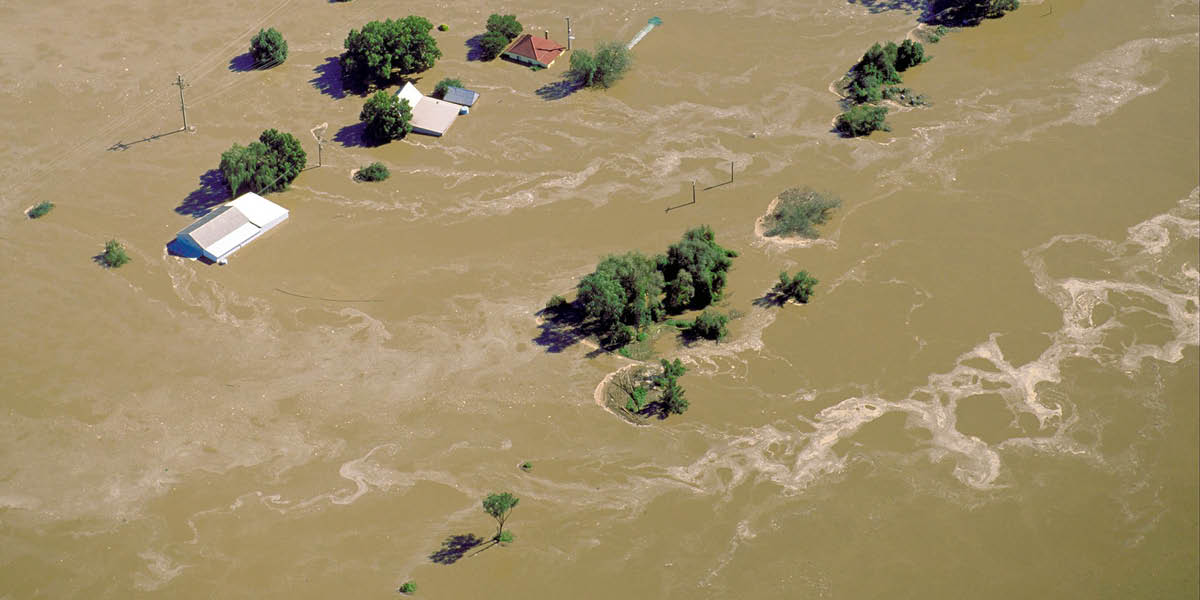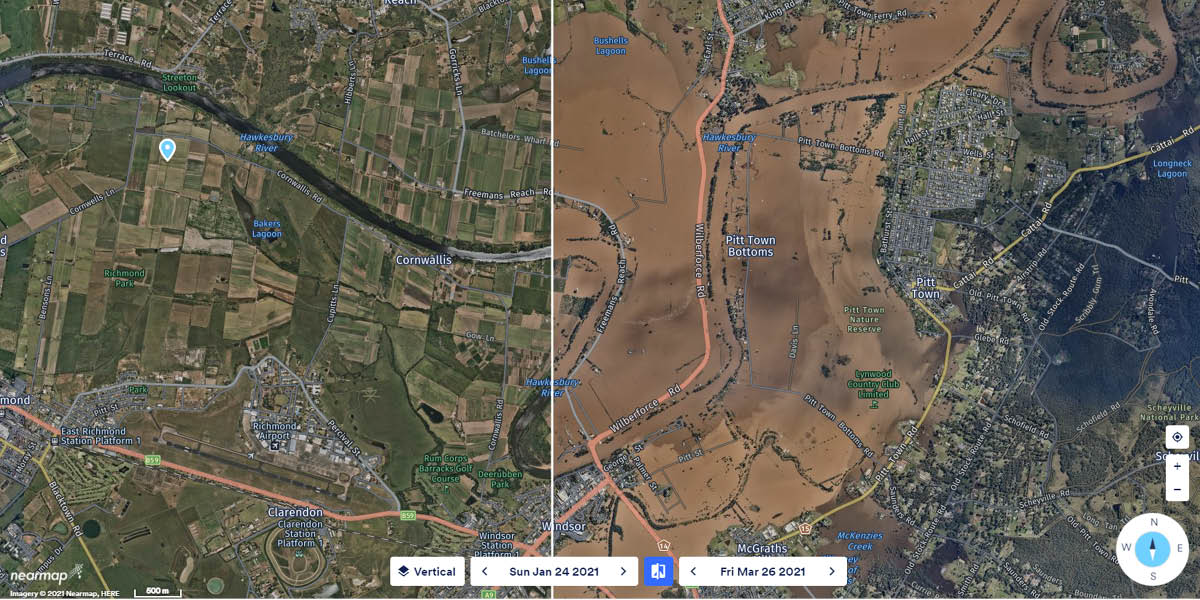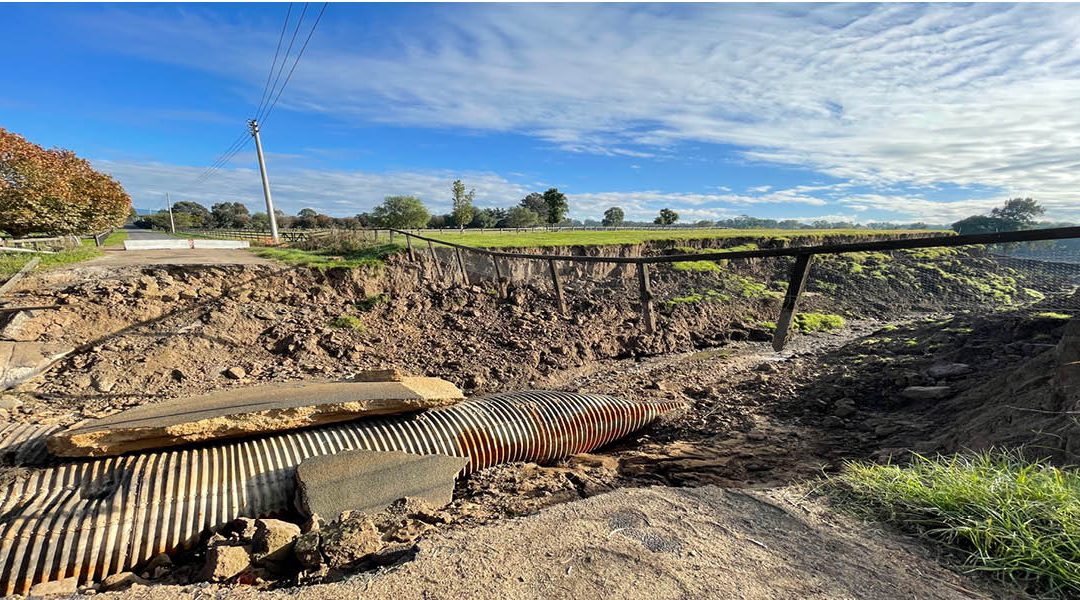It has been a significant roller coaster ride for NSW growers over the past five months who have all been largely impacted to some extent by the one in 100-year floods. In this special report from Sandra Godwin, TurfBreed explores the events leading up to the flood and how the turf industry embraced each other with support from across the Country.
Setting the scene
The wide rich alluvial flats along the Hawkesbury and Nepean rivers in New South Wales (NSW) are home to a significant number of Australia’s turf farms.
The location provides access to fertile soils, good quality water for irrigation and is on the doorstep of the nation’s biggest markets for both commercial and residential turf: Sydney, now bustling with about 6 million people across 650 suburbs.
But Western Sydney remains incredibly vulnerable to flooding, largely because of the huge catchment area and several downstream chokepoints, including Sackville Gorge, between Windsor and Wisemans Ferry.
Narrowing at these points stalls surging floodwaters which back up and flow across the valley, rising quickly to great heights.

There have been about 130 moderate to major floods in the Valley since records began in the 1790s. The largest flood on record was in 1867, reaching 19 metres(m) above normal river height at Windsor.
More recently, floods have struck at least once every 10 years between World War II and 1990.
But not even the completion of the Warragamba Dam in 1960 stopped flooding in the area. Three of the highest have occurred since then:
- In 1961, when the Hawkesbury River at Windsor peaked at 14.95m
- In 1964 (14.57m)
- In 1978 (14.46m)
Well aware of the flood risks, local government authorities have over the years constructed a network of drainage channels to ensure any excess water can be cleared quickly and Hawksbury growers have relied on this aging infrastructure to protect their farms.
Unfortunately, it’s not always enough.
The rains begin…
Torrential rainfall along the NSW coast in February 2020, including 397mm in 24 hours at Robertson, caused major flooding at North Richmond and moderate flooding at Windsor. For the first time in 28 years, both the Windsor and Richmond bridges were under water.
According to a report by the Bureau of Meteorology (BOM), it was the wettest four-day period on record for the Hawkesbury-Nepean catchment. But flooding was less than would normally have been expected for a rain event of this size because of below average soil moisture due to severe drought.
A year later, some flood-affected turf growers were just beginning to get back to business as usual when authorities began warning of a new severe weather event expected to strike the full length of the NSW coast.
By March 20, Warragamba Dam had begun spilling and the Bureau was describing the weather as “volatile, dangerous and dynamic”. The NSW State Emergency Service ordered the evacuation of tens of thousands of people from low-lying areas.

A BOM report released in April said the week to March 24 was the wettest in the region since national daily records began in 1900. Flooding in the Hawkesbury-Nepean was the worst in more than 30 years, thanks to relatively wet catchments resulting from the La Niña that developed in the second half of 2020.
“Soils became more saturated during 2020, and water storage levels generally increased,” the report said. “This contributed to flooding being more widespread and severe than had been the case during a broadly comparable rain event in February 2020.”
The outcome
Early estimates from Turf Australia indicated more than 2800 hectares of turf, with a farm gate value of $168 million, was affected by the flooding.
In a statement, Turf Australia and Turf NSW said this was a conservative estimate and the damage bill would probably rise once destruction of equipment, buildings and machinery was factored in.
Damage to farms would also have wide-ranging implications for other industries, with major shortages of turf forecast over the coming 12 months, they said.
Several meetings, hosted by Turf Australia, have been held with flood-affected growers to find out what support they needed and make them aware of what help was available.
TurfBreed NSW business development manager Ann McKeon agreed full recovery would likely take a year.
“Depending on the degree of damage, some will be trading out of some paddocks earlier than others,” she said. “But we won’t see anything substantial out of them for 12 months.”
Ann said some growers had been able to rinse or dust off the silt left behind when floodwaters receded, while others had tried ploughing in their turf, hoping it would regrow from runners.
“The major problem is erosion of fields and roads,” she said. “A lot of paddocks were lost because the drainage system failed. They’re basically trying to reclaim their paddocks incrementally.”
Generosity across the borders
In the meantime, generous turf growers from other areas have offered both donations of turf and sales at cost to help flood-affected growers fill orders and generate cash flow.
TurfBreed Queensland (QLD) business development manager Daniel Pieper has been working with Ann to co-ordinate the offers, collecting information about available varieties and volumes to pass on.

“It’s not unusual for NSW growers to bring in turf from southeast QLD during peak season,” he said. “The growers will talk directly, agree on a price and move on from there.”
One QLD turf grower offered the use of his tractors, forklifts and turf harvesters. Turf growers regardless of where they are in Australia have a particular understanding of the worst nature can throw at them and their generosity in these circumstances has known no bounds.
Parts of the QLD turf grower’s farm floods several times a year, but not on the scale experienced in the Hawkesbury.
“They had metres of water over their farms, whereas we probably get 200-300mm over our farm twice a year,” he said.
“I’ve got a lot of friends and family down there. I just wanted to let them know that I’ve got heaps of gear up here if they get stuck. I think being an Australian and being farmers, we all try and look after each other and help each other out.”
He said people were responding to the disaster in different ways.
“The older ones who have been through it before know the process,” he said.
“They have a bit of a plan in place to get things back kicking again. Some of the younger ones that have been sold the dream of being a farmer, with a bit less experience, are hurting a bit more going through their first major flood.”
Australian Lawn Concepts partner Sandy Bauman, who is also TurfBreed chairman, said he felt for the affected growers, especially those who had lost crucial infrastructure.
“The turf will grow back, and you can plant it,” he said. “But for the blokes who’ve had their offices and pumps washed away, it’s tough. There’s a lot of empathy coming from up here for the guys, no doubt about that.”
Sandy said the biggest issue facing the flood-hit growers was the likelihood their turf would not recover before the onset of winter stopped it growing.
“We fully expect to be supplying down there until probably October and then our market will get so busy that we’d really struggle to supply them and our market as well,” he said.
He added that there was one silver lining to the expected tightening of supply – with the opportunity to correct the price differential that had made Sydney turf prices among the cheapest in Australia.

